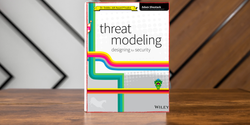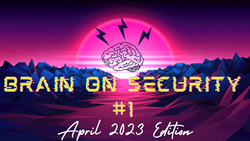On this page
Introduction
It's astonishing to witness the significant disparity between technology and knowledge within organizations. We devote considerable time and resources to technology that enables knowledge creation, organization, and storage, yet often undervalue knowledge itself.
This imbalance is evident in the widespread presence of Chief Technology Officers (CTOs), while roles dedicated to Knowledge Management are conspicuously absent.
While technology can certainly enhance and facilitate the application of knowledge, the essence of knowledge management lies in fostering a culture of collaboration, knowledge-sharing, and open communication among team members in your organization.
In the hypothetical scenario where AI and humans find themselves in competition, our most significant vulnerability would become their greatest asset. As humans, we have a tendency to hoard and conceal knowledge, while AI, on the contrary, exhibits a remarkable capacity for instantaneous and real-time sharing of acquired information. This striking contrast highlights the inherent advantage AI possesses in the realm of knowledge dissemination and collaboration.
In this blog post, we will explore the importance of good knowledge management for a successful information security program and how the Building a Second Brain (BASB) approach, which includes the C.O.D.E and PARA methods, can enhance overall organizational security.
1. The role of knowledge management in information security
Knowledge management is the systematic process of collecting, organizing, and distributing an organization's knowledge, including its policies, procedures, and best practices.
In the context of information security, PKM helps ensure that employees have access to the relevant and up-to-date knowledge needed to prevent breaches and safeguard critical data.
The Building a Second Brain concept, popularized by Tiago Forte, provides an innovative approach to personal knowledge management.
At its core lies the C.O.D.E method (Capture, Organize, Distill, Express), which, when combined with the PARA method (Projects, Areas, Resources, Archives), enables organizations to create a robust information security program.
2. Improved awareness and decision-making through Capture and distilling
By capturing and distilling critical information related to information security, employees are better informed about potential risks and threats.
Access to the latest guidelines and best practices enables them to make informed decisions, significantly reducing the likelihood of a security breach.
The C.O.D.E method ensures that employees work with the most current and accurate information, which ultimately leads to better decision-making and more effective security measures.
3. Enhanced collaboration and information sharing with Express
Effective PKM promotes collaboration and information sharing across departments.
The Express step in the C.O.D.E method facilitates information sharing and collaboration, fostering a culture of shared responsibility and cooperation in maintaining information security.
When employees have a better understanding of the organization's security policies and procedures, they can work together more efficiently to prevent and respond to potential threats.
4. Streamlined processes and reduced redundancy using the PARA method
An essential aspect of KM is the elimination of redundant information and processes.
By organizing information using the PARA method, organizations can reduce redundancy and ensure that employees have access to the most up-to-date knowledge.
Separating sensitive information into Areas and non-sensitive information into Resources within the PARA method ensures that sensitive data remains secure and is accessible only to authorized individuals.
This approach reduces confusion and helps maintain a more consistent approach to information security across the organization.
5. Ongoing learning and adaptation through continuous review
Both the C.O.D.E and PARA methods encourage ongoing review and updates of knowledge, ensuring that organizations stay ahead of emerging threats and trends.
Knowledge management in the context of Building a Second Brain promotes continuous learning and adaptation.
As the threat landscape evolves, it's crucial for organizations to stay up-to-date with the latest trends and best practices in information security.
6. Boosting employee confidence and competence with organized knowledge
Good knowledge management, particularly when using the C.O.D.E and PARA methods, empowers employees with the information they need to take ownership of their roles in maintaining information security.
When employees are well-informed and confident in their abilities, they are more likely to adhere to security policies, be proactive in identifying potential issues, and contribute to the overall success of the information security program.
Conclusion
Effective knowledge management is the foundation of a successful information security program.
By implementing the Building a Second Brain approach, which includes the C.O.D.E and PARA methods, organizations can enhance their security measures while promoting collaboration, continuous learning, and better decision-making.
Investing in knowledge management is not only a smart business decision, but it is also essential for the long-term success of an organization's information security program.







